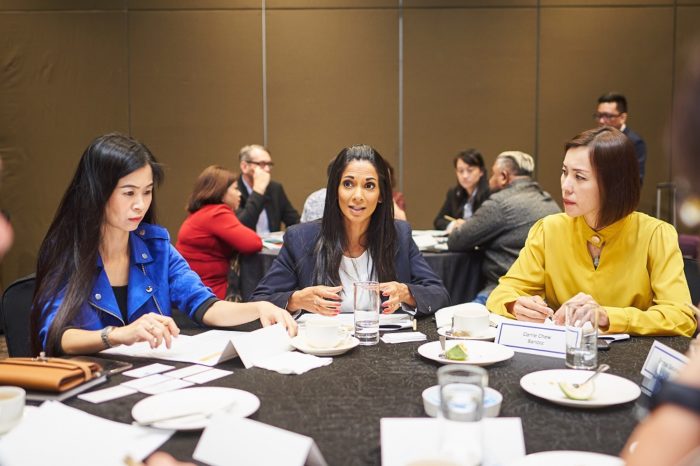
Challenges facing the new age CMO
share on
In 2016, 25% of CEOs were looking at CMOs to drive growth. Now, according to an Accenture study published in March, that number has grown to 31%. Moreover, two in three CEOs don’t believe their current marketing leads have the leadership skills or business acumen required for the role.
Delving further into the matter, David Lane, group client vice-president of Brand Learning, quoted a study by Accenture that said leading marketers know their roles are undergoing a profound and enduring shift. He explained that instead of being involved in measurable and repeatable tasks such as content production and managing social profiles, which form the foundation of marketing, marketers should work towards “blue sky thinking” which requires them to be innovative, and creating new ideas and possibilities, as well as finding new sources of growth.
Meanwhile, there are also marketers “trapped in the frozen middle” because they spend too much of their time managing the basic tasks. As a result, they do not have the time to think and break through to blue sky thinking, unlike pioneering CMOs, Lane explained.
Stephen Hamill, VP of Oracle CX and Marketing Cloud for APAC at Oracle, added that marketers today are expected by senior management to generate revenue, and for most of the top-notch organisations globally, are already attaching a revenue-generation KPI to their marketing teams. “Prior to today’s experience economy, consumers were more brand-centric where the brand alone had a value beyond a product, and consumers subscribed to it beyond the utility. But now, in the experience economy, the experience is probably more critical to your success than the product or the value of the brand,” he said.

This experience is created in everything the brand does from communication to the product offering. This new breed of consumers wanting an experience are forcing marketers to go beyond the advertising element of their job and rethink the product, and areas of growth. “Advertising is just one component of the marketing job,” he said. “In the past, marketers were guardians who owned the product. But today, marketers are the creators of products. The brand is the sum of all our customer experiences,” he added.
To remain competitive in the eye of the consumer, brands need to first figure out who their customers are. It is no longer enough today to say a brand wants more customers. They need to know who exactly will buy. To do so, they first need to understand the customers’ journeys, starting from the discovery phase. “Brands need to know how consumers discover them and how they can discover new audiences. Brands also need to add value to the customer in some form, because if they don’t, the customer will switch off. And, of course, their products need to be consumable and serve their audiences in some form or another,” Hamill explained.
TIME IS OF THE ESSENCE
Hamill added that one stark difference between consumers in the past and the next generation is the importance of time. “No matter how successful you are, time is the one thing you can’t buy. Time is super precious to consumers. People in the next gen live in a faster pace and want answers in milliseconds,” he said. Quoting studies from Oracle, he added that 66% of buyers believe time is the biggest factor in CX.

Meanwhile, according to Mobify’s 2017 Q2 Mobile Commerce Insights Report, cutting the load time down from 15 seconds to five seconds increases page views 21% for returning users and 16% for new users, highlighting the value of time. Be it for B2B or B2C industries, consumers want to spend less time waiting, and quicken the pace at which a task (such as making a purchase) can be completed. The report further indicated that shoppers who spend 25% of their visit waiting for pages to load are half as likely to convert as shoppers who spend 10% of their time waiting.
Hamill also added that answers to customer queries need to be clear and easily available to help the customer, given almost 80% of buying decisions will be made before a customer even speaks to an organisation’s people. Adding on to the conversation of time being the new currency was also Eric Wong, chief customer and marketing officer, Prudential Assurance Malaysia who said that today his competition is no longer confined to the industry he operates in but also the organisations who can get data the quickest, provides remarkable client experience and gain ground in providing what the consumer wants fastest.
“Time is the new currency and today our competitors aren’t just insurance providers. It can be the likes of Airbnb, LinkedIn or eWallet players or in fact, anyone who can deliver the customers wants and needs on a real-time basis. The competition is a lot wider now. It no longer just comes from the industry,” he added.
This post is part of advertising + marketing's bespoke Roundtable series and was sponsored by Oracle and Brand Learning (part of Accenture). It occurred on 19 September 2019 at Hilton Kuala Lumpur, Malaysia.
share on
Free newsletter
Get the daily lowdown on Asia's top marketing stories.
We break down the big and messy topics of the day so you're updated on the most important developments in Asia's marketing development – for free.
subscribe now open in new window
